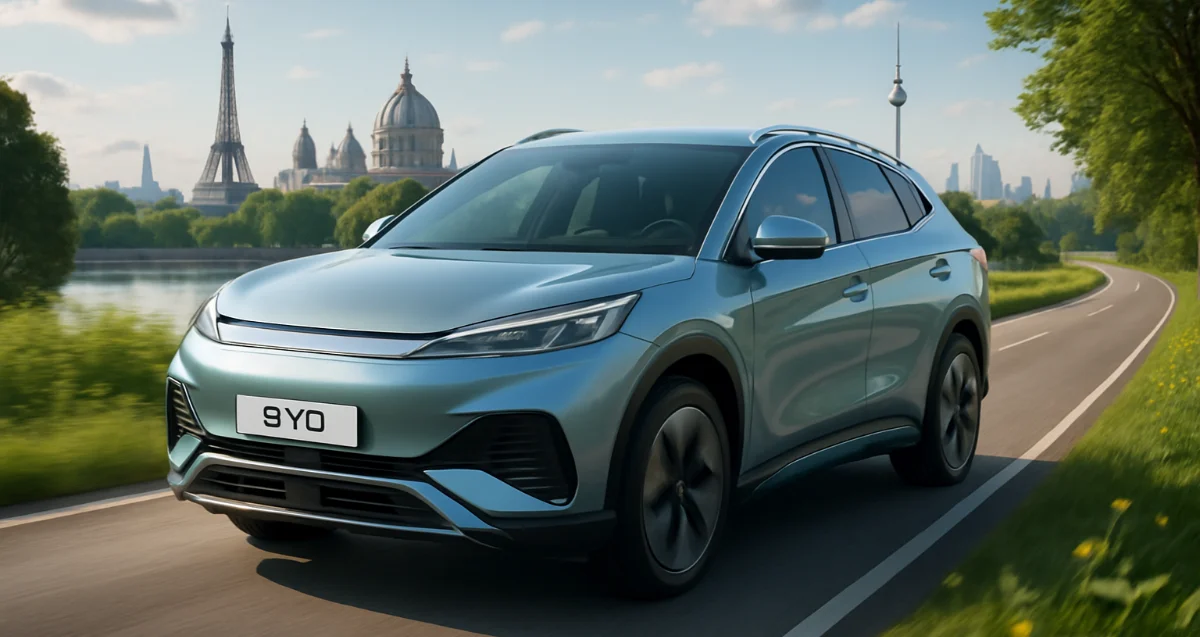The dramatic rise of BYD’s electric vehicle (EV) sales in Europe, particularly in key markets like the UK and Germany, reflects a significant shift in the competitive landscape of the European EV industry as Tesla’s sales have steeply declined over the same period. Several key factors explain why BYD sales are soaring in European countries in 2025:
Competitive Pricing and Affordability
BYD’s vehicles are priced roughly one-third lower than Tesla’s entry-level models, making them attractive to a broader range of customers seeking value without compromising on quality or technology. This pricing advantage is supported by BYD’s vertically integrated production, including its in-house FinDreams Battery subsidiary, and government subsidies from China. Models like the affordable BYD Seagull (known as Dolphin Surf in Europe) and the Seal U have resonated strongly with cost-conscious European buyers.
Expanding Model Range Tailored to European Markets
Unlike Tesla, which relies heavily on a limited set of models (mainly Model 3 and Model Y), BYD offers a diversified lineup including fully electric and plug-in hybrid options across various segments. This variety, combined with vehicles designed to meet European regulations and consumer preferences, helps BYD capture more market segments.
Rapid European Market Expansion and Dealership Networks
Since officially entering broader European markets in late 2022, BYD has aggressively expanded its sales presence, now operating around 1,000 stores across 12 European countries by mid-2025. They are also launching local manufacturing facilities (e.g., a new plant in Hungary), which reduces tariffs, lowers costs, and enhances their competitiveness against both Tesla and traditional European automakers.
Advanced Technology and Range Improvements
BYD’s EVs are equipped with their Blade lithium iron phosphate (LFP) batteries known for safety, longevity, and robust range capabilities—some models offer more than 600 kilometers per charge. The company also introduced new flash-charging technology, enabling recharging at speeds near that of refueling a gas vehicle, which appeals strongly to European consumers.
Reputational and Political Factors Impacting Tesla
Tesla’s declining sales have been partly attributed to negative perceptions tied to CEO Elon Musk’s high-profile political engagements, which have alienated some European consumers. This reputational challenge, coupled with Tesla’s higher prices and constrained model variety, has caused its market share to diminish sharply in Europe, despite overall EV demand increasing.
Growing consumer trust and positive reception
BYD has attracted top talent from European automakers and invested heavily in R&D focused on EVs and plug-in hybrids, which has helped improve product quality and appeal. Analysts note that BYD’s rapid rise from a relatively unknown foreign brand to a strong contender has emboldened consumer confidence.
Market Dynamics Favoring Chinese EV Makers
European Union tariffs on Chinese EVs initially posed hurdles, but BYD’s early strategy of introducing plug-in hybrids—exempt from certain tariffs—and building local manufacturing capabilities helped it overcome these barriers and grow its market footprint effectively.
Sales data exemplify this shift: In July 2025, BYD’s UK sales quadrupled year-over-year with over 3,000 units registered while Tesla’s sales dropped nearly 60%. In Germany, BYD increased registrations by nearly 390%, surpassing Tesla’s registrations, which fell by over 55%. Year-to-date figures reinforce this trend, with BYD selling tens of thousands of vehicles and overtaking Tesla as Europe’s top EV seller.
In summary, BYD’s soaring sales in European countries are driven by a well-executed combination of affordability, expanding and tailored product offerings, rapid expansion of sales and manufacturing presence, improved technology, and Tesla’s brand challenges. This has allowed BYD not only to capture significant market share but also to reshape the competitive EV landscape in Europe, marking a watershed moment in the region’s automotive market.
